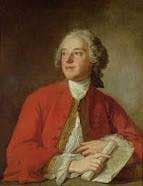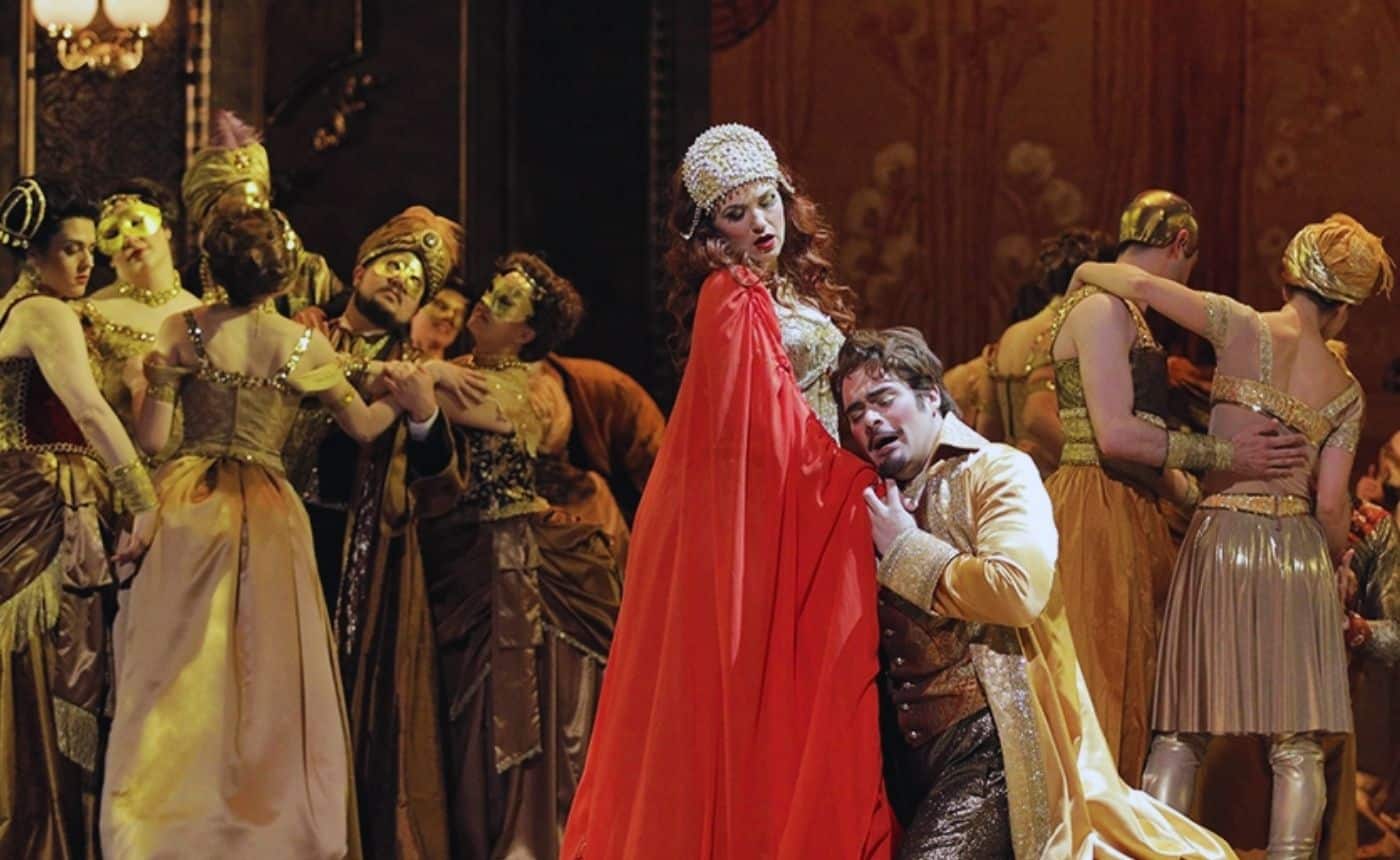The Barber of Seville online course by Dr. Paul DorganPart 5: Barbiere Extras
RECORDINGS OF IL BARBIERE DI SIVIGLIA
| Conductor | Principal Cast | Year | Company | Format |
| Giulini | Gobbi/Callas/Alva | 1956 | La Scala (Live) | CD |
| Galliera | Gobbi/Callas/Alva | 1957 | CD | |
| Giulini | Panerai/Berganza/Alva | 1960 | Covent Garden (Live) | CD |
| Abbado | Prey/Berganza/Alva | 1972 | CD/DVD | |
| Marriner | Allen/Baltsa/Araiza | 1982 | CD | |
| Chailly | Nucci/Horne/Barbacini | 1982 | CD | |
| Patanè | Nucci/Bartoli/Matteuzzi | 1989 | CD | |
| Levine | Milnes/Sills/Gedda | 1996 | CD | |
| Pappano | Spagnoli//DiDonato/Florez | 2009 | Covent Garden | DVD |
| Mazzola | Bürga/de Niese/Stayton | 2017 | Glyndebourne | DVD |
GIOVANNI PAISIELLO, composer of an earlier Barbiere opera
(1740 – 1816)
Paisiello was born in 1740 and studied in Naples; his early compositions led to operatic commissions from Bologna, and from Rome. Naples called in 1766, and for the next decade or so, his scores were heard at the Teatro Nuovo there. Catherine II, the Empress of Russia, invited him to her court in St. Petersburg. In the Spring of 1776 an opera of his opened in Venice; in December he was in Mannheim (obviously a stop-over on his way to St. Pete!) for a new opera; a mere month later Nitteti premiered in St. Petersburg at the end of January 1777. This is surprising, given the difficulties of getting around in those days, for he would have to have been in Russia to supervise the production and make whatever changes the singers demanded. It was during his 7-year stay in Russia that the two operas by which he’s best-remembered today were written: La serva padrona (1781) and Il barbiere di Siviglia (1782). But “best-remembered” is only for you deep-dyed Opera Buffs/Geeks. Hands-up those of you who even recognize Paisiello’s name! His Il mondo della luna (a revised version of an earlier setting of Goldoni’s play from 1774) opened in the Mariinsky Theatre in St. Petersburg in 1783. (P.S. for you opera geeks, Haydn’s operatic version of the same play was first produced in 1777). The following year Paisiello was in Vienna and then back to Italy. Where, in 1787, a revised version of Il barbiere di Siviglia was given in Naples, and it was probably this version which took Europe by storm and led to Rossini having to come up with a new title for his operatic version of Beaumarchais’ play, which became Almaviva, o sia L’inutile precauzione in Rome’s Teatro Argentina on February 20, 1816. (For more details on this title-business, read “The Musical Story of Il barbiere” elsewhere on this site).
In 1802 Napoleon invited Paisiello to Paris, but the cold reception there of Proserpine in 1803 led him to beg the Emperor to be allowed to return to Napoleon-friendly Naples. By 1808, when his final opera, I pittagorici, was produced, it was clear that the Neapolitans wanted more than Paisiello could give them. The death of his wife in 1815 led to a rapid decline in his health, and Paisiello died in June 1816.
Paisiello composed some 94 operas for theatres in a variety of Italian cities (not to mention a few outside Italy, and his seven-year sojourn in Russia). In 1774, for example, there were five new scores: one for Milan; two for Naples; one for Venice, apparently around the time as the second Naples production; and then back to Venice. My understanding of the Italian opera world in those days required the composer to be on-site during the rehearsals for his opera (to cater to the various demands of the singers) and to supervise the first three performances. How could it have been possible for him to travel so quickly between such distant cities as Milan and Naples and Naples and Venice? Given the difficulties involved in travel to these disparate cities, you can only be amazed that he wrote so many operas for such a geographically diverse number of Opera Houses!
In addition to his considerable operatic output, there are some hundred scores based on religious texts, ranging from Oratorios (he set the Passion accounts of Matthew; John; and Luke) to various cantatas; masses; psalm settings; and motets. I don’t think the Utah Symphony has ever given us any of his keyboard concertos, but there are 8 of them; there are 9 string quartets; and there’s a Symphony in C.
Poor Paisiello! So prolific! So successful in his day: his music was admired by Haydn, Mozart and Beethoven! But now so side-tracked and forgotten!
BEAUMARCHAIS, author of the trilogy of Figaro plays
(1732 – 1799)
Pierre-Augustin Caron was the only surviving son of André-Charles, a watch-maker, who was raised a Huguenot (we’d call him a Protestant). The 1685 Edict of Fontainebleu required all Huguenots to renounce their religion or leave the country. Many did leave, and, in what may well have been then the outskirts of 17th-century Dublin there is a plot of land, fairly close to what is now the city-center, set aside as a Huguenot Cemetery. You opera-buffs will know of Meyerbeer’s 1836 opera Les Huguenots, which deals with the 1572 massacre of French Protestants. Andrés-Charles stayed, converting to Catholicism and having his son baptized. Pierre seems to have been a wild youth until his father apprenticed him and insisted on regular work hours. The result was an “escapement” mechanism which made watches more accurate. The royal watchmaker (yes, there was such a position) had befriended Pierre at his father’s shop; realized the advantage of Pierre’s invention, and claimed it as his own. No shrinking violet, Pierre wrote a letter urging the Academy of Sciences to investigate the claim, and it ruled in Pierre’s favor. King Louis XV asked him to make a watch mounted on a ring to give to his mistress Madame de Pompadour, which led to Pierre being named “Purveyor to the King.”
In 1756 he married a widow who owned a tract of land known as Le Bois Marchais; adapting that, Pierre became “Pierre-Augustin de Beaumarchais” and came up with a coat of arms. The death of his wife a year later led to severe financial problems, from which he was rescued by an appointment to teach the harp to Louis’s 4 daughters, which, in turn, led to his becoming musical advisor to the Royal Family. With the help of a business-associate, Beaumarchais – as we now must call him – bought the title Secretary-Councillor to the King; a few years later bought another one: now, as Lieutenant General of Hunting, he supervised the royal parks. Yes, Virginia, buying political positions is as old as the creation of political positions!
About a decade later, in 1764, he moved to Madrid to help his sister, who had been dumped by her Spanish fiancé; while there he tried to arrange deals for his business-partner. After about a year there he returned to France with his sister’s marriage called-off; no business deals; but with a wealth of experience which found expression in the plays which we know today from their operatic adaptations by Mozart and Rossini. Obviously the story – scandal? – of his sister’s dumping travelled through Europe, for in 1774 none other than the great Goethe wrote Clavigo, with Beaumarchais as the leading character!
Meanwhile there was a revolution going on in America, and various representatives from there travelled to Paris, petitioning the King for help in their struggle against their British oppressors. I don’t think it’s an exaggeration to say that without Beaumarchais’s machinations, America might still be a UK colony. Roderigue Hortalez and Company was set up to supply whatever the American revolutionaries needed to fight the Brits. Spain and Holland, England’s great naval rivals, should have contributed financially to the project, but they didn’t. So it was Beaumarchais’s money which supplied the American rebels with the means (armaments and men) which resulted in their defeat of the British at Saratoga in 1777. Beaumarchais encouraged Louis to sign the 1783 Treaty of Paris, in which England acknowledged the independence of America from English rule.
A play he had written was produced in 1775: Le barbier de Séville, which became the source of the various operatic adaptations noted in “The Musical Story of Il barbiere di Siviglia.” In 1778 there was a sequel: Le folle journée, which Mozart, despite Vienese Imperial objections (check those out in the 1984 movie adaptation of Peter Schaffer’s original 1979 play Amadeus) , had operatically turned into Le nozze di Figaro in 1786. Some 20 years later, in 1792, came La mère coupable, in which what initially seemed such a perfect relationship between Rosina and Almaviva in the first play has shattered by the third one. The triology’s gradual disillusion with the Almavivas’ relationship may parallel at least part of Beaumarchais’s own disillusioned life: three marriages and multiple affairs – we’ll never know.
Not content with his political machinations, and play-writings, he determined to publish the complete works of Voltaire, who had died in 1778. Another financial failure! The French Revolution declared Beaumarchais loyal to the old monarchy and he spent over two years in exile before his name was cleared and he was able to return to Paris in 1796. Three years later Beaumarchais died.
Figaro’s aria in Barbiere sings of his various appointments and chores, but Beaumarchais’s life was far busier and more complicated than his fictional self! Read all about it in Frederic Grendel’s Beaumarchais: The Man who was Figaro, translated from the French by Roger Greaves.







